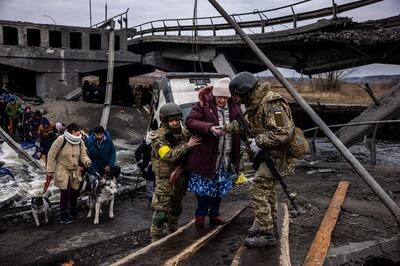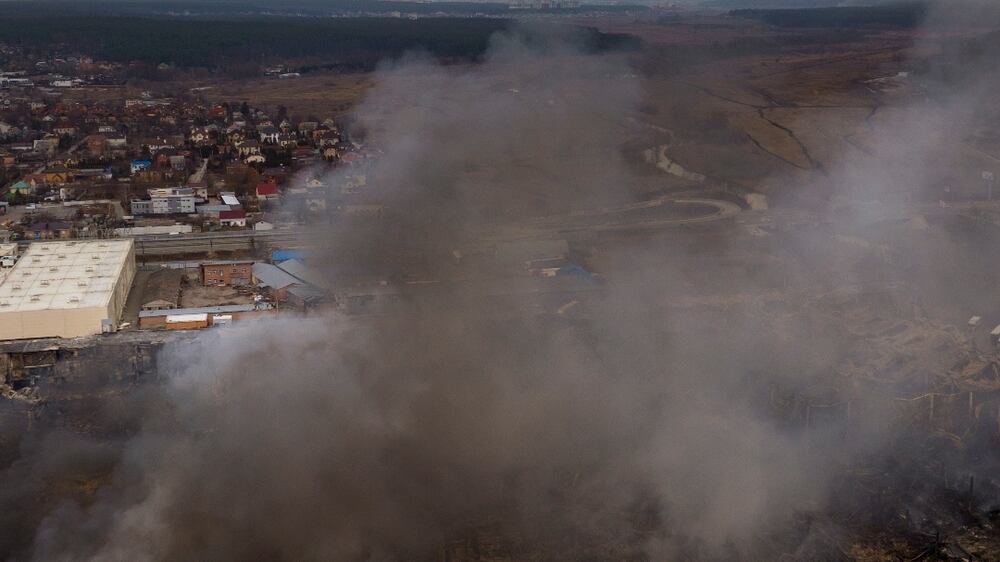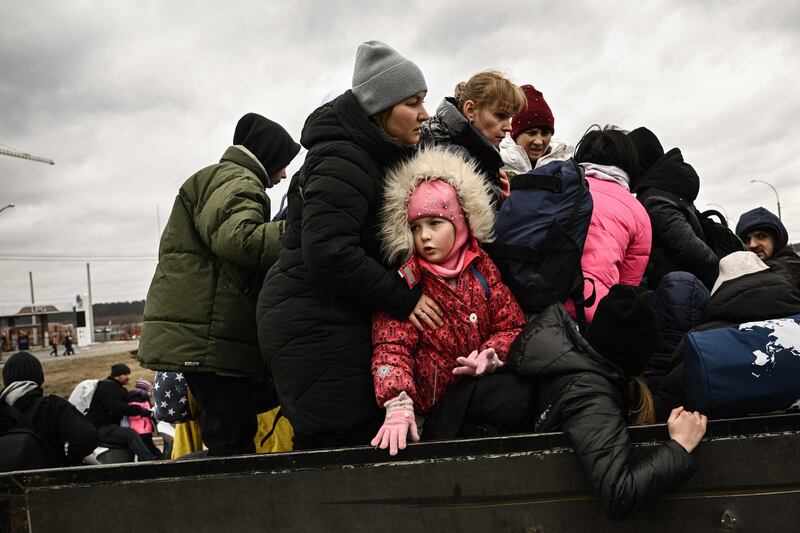Live updates: follow the latest news on Russia-Ukraine
Russia announced yet another ceasefire and the opening of a few humanitarian corridors to allow civilians to flee Ukraine from Monday.
Similar measures have fallen apart recently, with Moscow’s armed forces continuing to pummel some Ukrainian cities with rockets even after an announcement has been made.
A day earlier, hundreds of thousands of civilians attempting to flee to safety were forced to take shelter from what Ukrainian officials described as Russian shelling in cities in the country's central, northern and southern parts.
Specifically, humanitarian corridors will be opened in the Ukrainian cities of Kyiv, Mariupol, Kharkiv and Sumy, the Russian Defence Ministry said.
What are humanitarian corridors?
Humanitarian corridors are specific routes and logistical methods agreed upon by all relevant parties in an area of active fighting.
They are established to afford victims safe passage and to grant humanitarian charities and their workers safe way into and out of conflict areas.

Such areas can sometimes also be associated with a no-fly zone or no-drive zone.
The first time humanitarian corridors were discussed by the international community was in 1990, when they were defined by the UN General Assembly in Resolution 45/100.
What humanitarian corridors have been established in Ukraine?
Ahead of a third round of talks planned for Monday, the Russian Defence Ministry said a ceasefire would start in the morning, and safe passage would be granted to civilians from the capital, Kyiv, the southern port city of Mariupol, Kharkiv and Sumy.
Some of the evacuation routes, however, are designed to funnel civilians towards Russia or its ally Belarus — unlikely destinations for many who would prefer to head to countries west and south of Ukraine's borders.
The Ukrainian government is proposing eight humanitarian corridors, including from Mariupol, that would allow civilians to travel to the western regions of Ukraine, where there is no Russian shelling.
Dramatic moment Russian shelling hits Ukrainian town of Irpin

Have they been effective?
Two recent attempts to allow thousands of civilians to leave the besieged city of Mariupol ended in disaster, with civilians under fire and both sides accusing each other of being in breach of agreed terms.
The Russian proposal was reminiscent of similar ones tabled in Syria. In 2016, a joint Russian and Syrian proposal to set up humanitarian corridors in opposition-held eastern Aleppo was deeply criticised on humanitarian grounds.
Human rights activists said the tactic, coupled by brutal sieges, effectively gave residents a choice between fleeing into the arms of their attackers or dying under bombardment.
Are humanitarian corridors enough for civilians and aid in Ukraine?
According to Stephen Cornish, general director of Doctors Without Borders (MSF), humanitarian corridors are helpful but not enough.
“Several times we have witnessed civilians encouraged to leave through time-bound civilian evacuation corridors and then … those who could not or would not flee were met with extraordinary and indiscriminate violence unleashed on everyone and everything left behind,” Mr Cornish said.







